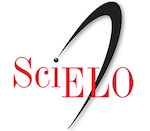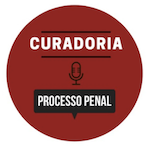Editorial: A avaliação do Impact Factor na publicação científica de Direito Processual Penal
DOI:
https://doi.org/10.22197/rbdpp.v3i3.108Parole chiave:
Editorial, editoração científica, fator de impacto, critérios avaliativos, direito processual penal.Abstract
Geralmente e cada vez com maior frequência, os governos decidem implantar medidas políticas destinadas à promoção e premiação da excelência na pesquisa científica. Essa é a finalidade dos exercícios nacionais de avaliação da pesquisa, tipicamente baseados na análise da qualidade dos melhores resultados das investigações. Todavia, uma abordagem diferente à análise e à intervenção funda-se na medida da produtividade de cada pesquisador, isto é, no impacto global de suas publicações científicas em determinado período examinado. O presente editorial analisa, em primeiro lugar, a convergência das duas abordagens; em segundo lugar, questiona se e em qual medida os pesquisadores mais produtivos obtêm sempre o maior numero de citações; em terceiro lugar, qual é a função da editoria científica em relação ao fator de impacto.Downloads
Riferimenti bibliografici
ABT, Helmut. Do important papers produce high citation count? Scientometrics, 2000, 48, p. 65-70.
ALBERT, Michael et al. Direct validation of citation counts as indicators of industrially important patents. Research Policy, 1991, 20, p. 251-259.
BALABAN, Alexandru. How should citations to articles in high and low impact journals be evaluated, or what is a citation worth? Scientometrics, 1996, 37, p. 495-498. https://doi.org/10.1007/bf02019260
CAPPARELLI, Bruna. Editorial: Sobre a exigência de um método de escrita de artigos científicos e de estudo do Direito Processual Penal. Revista Brasileira de Direito Processual Penal, Porto Alegre, vol. 3, n. 1, p. 19 s., jan./abr. 2017. https://doi.org/10.22197/rbdpp.v3i1.37
CAPPARELLI, Bruna. Editorial: O fascínio do conhecimento do Direito Processual Penal na era do “protagonismo jurisdicional” e da comunicação científica digital. Revista Brasileira de Direito Processual Penal, em, Porto Alegre, vol. 3, n. 2, p. 459 s., mai./ago. 2017. https://doi.org/10.22197/rbdpp.v3i2.79
CARNEVALE, Stefania. Indicatori bibliometrici e valutazione della ricerca in campo giuridico: qualche spunto per un dibattito da avviare. Cassazione penale, 2012, f. 4, p. 1562-1570.
CLARK, Kenneth. A survey of a growing profession. American Psychological Association America’s psychologists, 1957, VIII, p. 241.
GARLFIELD, Eugene; WELLJAMS-DOROF, Alfred. Citation data: their use as quantitative indicators for science and technology evaluation and policymaking. Science and Public Policy, 1992, 19, p. 321-327.
GARFIELD, Eugene. Citation indexing - Its theory and application in science, technology, and humanities. New York: Wiley, 1979.
GLANZEL, Wolfgang. The needs for standards in bibliometric research and technology. Scientometrics, 1996, 35, p. 167-176. https://doi.org/10.1007/bf02018475
HOLBROOK, Britt; FRODEMAN, Robert. Peer review and the ex ante assessment of societal impacts. Research Evaluation, vol. 20 n. 3, 2011, p. 239-246. https://doi.org/10.3152/095820211x12941371876788
LABATT, Henry. A Table of Cases in California: As Affirmed, Overruled, Modified, Commented Upon, or Altered by Statutory Enactment. San Francisco: H.H. Bancroft and Co, 1860.
MARTIN, Ben; IRVINE, John. Assessing basic research. Some partial indicators of scientific progress in radio astronomy. Research Policy, vol. 12, n. 2, 1983, p. 61-90.
MERTON, Robert. The sociology of science, Chicago: The University of Chicago Press, 1973; trad. it.: Scienza, religione e politica, Bologna: Il Mulino, 2011.
MOED, Henk et al. A critical analysis of the journal Impact Factors of Angewandte Chemie and The Journal of the American Chemical Society. Inaccuracies in published Impact Factors based on overall citations only. Scientometrics, 1996, 37, p. 105-116. https://doi.org/10.1007/bf02093487
MOED, Henk et al. The use of bibliometric data for the measurement of university research performance. Research Policy, 1985, 14, p. 131-149. https://doi.org/10.1016/0048-7333(85)90012-5
MOED, Henk et al. The application of bibliometric indicators: important field and time dependent factors to be considered. Scientometrics, vol. 8, n. 3, 1985, p. 177-203. https://doi.org/10.1007/bf02016935
NARIN, Francis. Technology indicators in strategic planning. Science and Public Policy, 1992, 19, p. 369-382. https://doi.org/10.1093/spp/19.6.369
PAVITT, Keith. The inevitable limits of EU R&D funding. Research Policy, 1998, 27, p. 559-568. https://doi.org/10.1016/s0048-7333(98)00056-0
SHAPIRO, Fred. Origins of bibliometrics, citation indexing, and citation analysis: The neglected legal literature. Journal of the American Society for Information Science, vol. 43, n. 5, 1992, p. 337-339. https://doi.org/10.1002/(sici)1097-4571(199206)43:5<337::aid-asi2>3.0.co;2-t
RAMIREZ, Ana; GARCIA, Esther; DEL RIO, Antonio. Renormalized Impact Factor. Scientometrics, 2000, 47, p. 3-9.
SHEPARD’S Citations. How to use Shepard Citations. Colorado Springs, CO: Shepard’s Citations, 1948.
VINKLER, Péter. Model for quantitative selection of relative scientometric impact indicators. Scientometrics, 1996, 36, p. 223-236. https://doi.org/10.1007/bf02017315
WAIT, William. A Table of cases affirmed, reversed or cited in any of the volumes of the reports of the State of New York. Albany: William Gould & Son, 1872.
Dowloads
Pubblicato
Fascicolo
Sezione
Licenza
![]()
As of 2022, articles published in the RDPP are licensed under Creative Commons Atribuição 4.0 Internacional. rticles published until 2021 adopted the Creative Commons Atribuição-NãoComercial 4.0 Internacional.
















